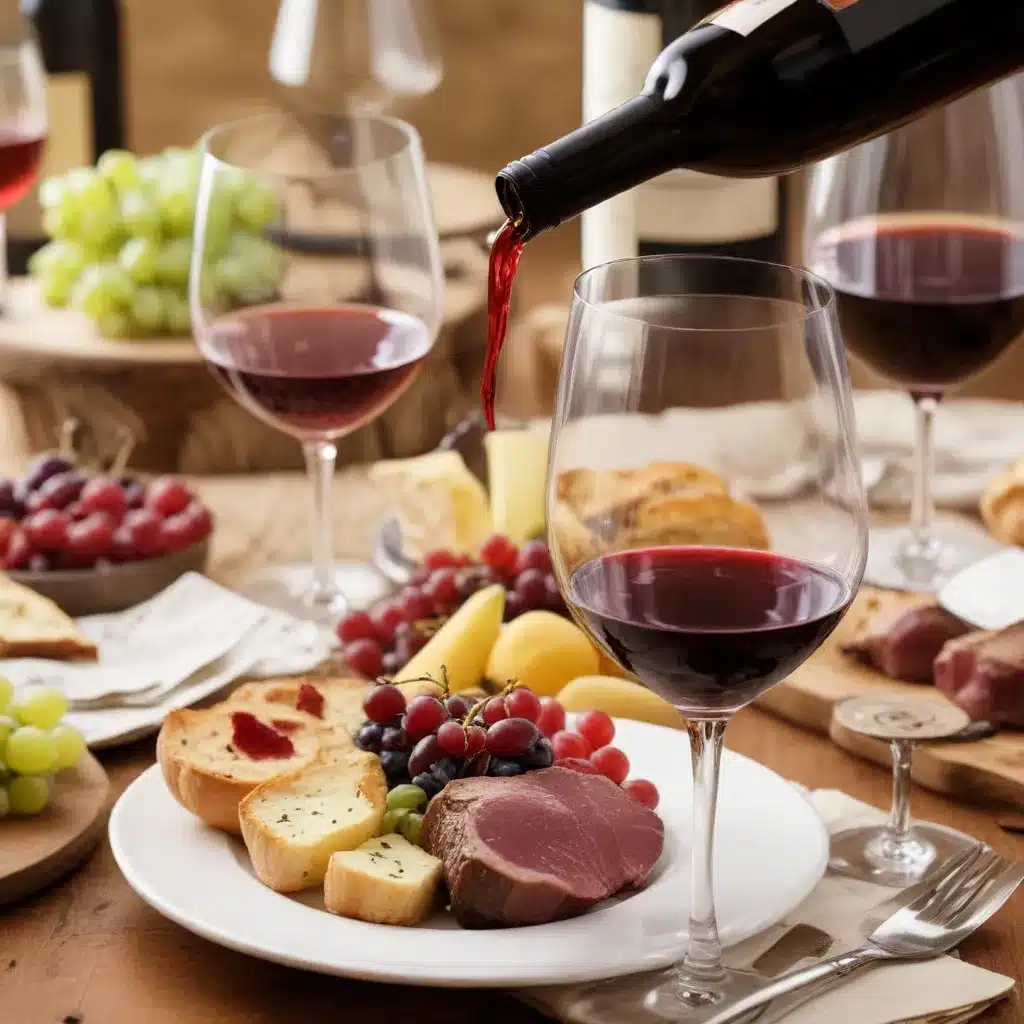
As a seasoned culinary expert with a deep passion for California cuisine, I’ve dedicated my career to exploring the intricate dance between food and wine. Through years of hands-on experience and relentless experimentation, I’ve come to appreciate the profound impact that thoughtful pairing can have on the dining experience.
The Alchemy of Taste: Unlocking Flavor Synergies
At the heart of exceptional food and wine pairing lies the concept of flavor harmony. It’s not about rigidly following a set of rules, but rather about understanding the subtle interplay of tastes, textures, and aromas. Just as a skilled composer orchestrates a symphony of instruments, the true culinary artist harmonizes the various elements on the plate and in the glass to create a captivating and cohesive dining experience.
One of the key principles I’ve learned is the importance of balancing intensity and weight. When a wine’s weight or body is mismatched with the dish, one element inevitably dominates the other, diminishing the overall enjoyment. A delicate white wine, for example, can be overwhelmed by a hearty, protein-rich entrée, while a bold, tannic red might overpower a delicate seafood course.
Another fundamental consideration is the interplay of sweetness. If the food is sweeter than the wine, the wine’s fruit and balance can be compromised, often leaving the wine tasting shrill and unpleasant. Conversely, if the wine is sweeter than the food, the pairing is less likely to cause harm, though the two may not dance together in perfect harmony.
Acid is another crucial factor in creating flavor synergies. While the relationship between a dish’s acidity and the wine’s acidity is slightly less categorical than the sweetness dynamic, it’s still a valuable element to consider. Matching the acidity levels can help create a seamless, complementary experience.
Harmonies of contrast can also be immensely satisfying. The classic pairing of salty prosciutto and sweet melon, or the interplay of herbal flavors in food and “mineral” notes in wine, exemplify how opposing tastes can come together to create a captivating whole.
Culinary Intuition: Navigating the Unexpected
Beyond these fundamental principles, the true magic of food and wine pairing often emerges in the unexpected, synergistic connections that defy conventional wisdom. I’ve had countless “2+2=5” moments, where the combination of flavors on the plate and in the glass has transcended the sum of its parts, sparking a sensual and even spiritual revelation.
One such serendipitous discovery was the pairing of a delicate Pinot Noir with a dish of duck confit and roasted beets. The wine’s earthy, slightly gamey notes perfectly mirrored the richness of the duck, while the beets’ natural sweetness provided a harmonious counterpoint, elevating the entire experience to a level of pure culinary bliss.
Conversely, I’ve also learned through experience that certain combinations are best avoided. Raw alliums, for instance, can be a veritable minefield for wine, especially delicate white varietals, while excessive garlic can hijack a wine’s umami-driven finish.
Embracing the Art of Imperfection
In the ever-evolving world of food and wine pairing, it’s important to strike a balance between rigorous knowledge and the joy of spontaneous discovery. While it’s useful to have a solid understanding of the fundamental principles, we must also be willing to let go of the illusion of control and embrace the art of imperfection.
As the renowned wine writer Terry Theise eloquently stated, “We need to learn to pay a decent degree of attention to these things and then forget them so we can talk to our friends.” The true mastery lies not in the ability to recite arcane pairing protocols, but in the confidence to let go and trust our senses, allowing the magic of serendipity to unfold.
Venturing Beyond the Conventional
In the pursuit of culinary excellence, I’ve found that it’s equally rewarding to venture beyond the conventional boundaries of food and wine pairing. Embracing the principles of molecular gastronomy, for instance, has led me to discover unexpected flavor combinations, such as the intriguing partnership of white chocolate and caviar, or the captivating interplay of strawberries and balsamic vinegar.
Similarly, the world of fusion cuisine has been a wellspring of inspiration, inviting me to explore the harmonious integration of diverse culinary traditions. From the vibrant fusion of Tex-Mex flavors to the delightful cross-pollination of Asian-inspired tacos, these boundary-pushing culinary experiments have expanded my understanding of what’s possible when we approach the art of pairing with an open mind and a spirit of adventure.
Cultivating a Palate for Discovery
Ultimately, the mastery of food and wine pairing is not about rigid adherence to rules, but rather a lifelong journey of sensory exploration and personal discovery. As a culinary expert, I’ve learned to trust my instincts, to experiment fearlessly, and to embrace the ever-evolving nature of this art form.
Whether you’re a seasoned oenophile or a passionate home cook, I encourage you to approach food and wine pairing with a spirit of curiosity and an openness to the unexpected. Immerse yourself in the diverse culinary traditions of the world, seek out new and innovative flavor combinations, and most importantly, trust your own palate as the ultimate guide on this captivating journey of taste and harmony.
By embracing the art of imperfection, celebrating the unexpected, and cultivating a palate for discovery, you’ll unlock a world of culinary delights that will forever transform the way you experience the seamless synergy of food and wine. So, let’s raise a glass to the endless possibilities that await, and embark on a sensory adventure that will leave an indelible mark on your culinary repertoire.

